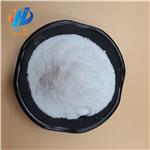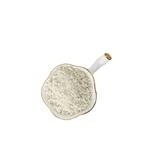- Protocatechualdehyde
-

- $2.00/ kg
-
2024-04-18
- CAS:139-85-5
- Min. Order: 1kg
- Purity: 99.8%
- Supply Ability: 10000ton
- Protocatechualdehyde
-

- $9.00 / 25kg
-
2023-12-25
- CAS:139-85-5
- Min. Order: 1kg
- Purity: 99%
- Supply Ability: 200000
|
| | Protocatechualdehyde Basic information |
| | Protocatechualdehyde Chemical Properties |
| Melting point | 150-157 °C(lit.) | | Boiling point | 213.5°C (rough estimate) | | density | 1.2667 (rough estimate) | | refractive index | 1.4600 (estimate) | | storage temp. | Store below +30°C. | | solubility | 6.3g/l | | form | Crystalline Powder | | pka | pK (25°) 7.55 | | color | slightly brown | | Odor | at 100.00 %. dry medicinal bitter almond | | Odor Type | medicinal | | Water Solubility | 50 g/L (20 ºC) | | Sensitive | Air Sensitive | | Merck | 14,7893 | | BRN | 774381 | | Stability: | Stable. Incompatible with strong bases, strong oxidizing agents. | | LogP | 1.090 | | CAS DataBase Reference | 139-85-5(CAS DataBase Reference) | | NIST Chemistry Reference | 3,4-Dihydroxybenzaldehyde(139-85-5) | | EPA Substance Registry System | Benzaldehyde, 3,4-dihydroxy- (139-85-5) |
| Hazard Codes | Xi | | Risk Statements | 36/37/38-22 | | Safety Statements | 26-36-37/39 | | WGK Germany | 3 | | RTECS | UL0380000 | | F | 9 | | Hazard Note | Irritant/Air Sensitive | | HS Code | 29124900 |
| | Protocatechualdehyde Usage And Synthesis |
| Description | Protocatechualdehyde is extracted from roots of the common traditional Chinese
medicine Salvia miltiorrhiza Bge, which was harvested in autumn for better quality.
Take root and remove stems, leaves and fibrous roots, then dry it. Most of them are
wide, and they are mainly cultivated in recent years. South Salvia and Gansu Salvia
are also widely used. Besides, there are a variety of sibling plant roots used as Salvia
miltiorrhiza in Yunnan. Now, the existence of protocatechualdehyde has been found
in variety of herbs, for example, in the leaf of Stenoloma Chusanum (L.) Ching and
Ilex chinensis Sims. | | Chemical Properties | Protocatechualdehyde is a phenolic aldehyde crystalline compound with the molecular formula C7H6O3. The compound is released from cork stoppers into wine. protocatechualdehyde can be found in barley, grapevine, green Cavendish, and root of herb S. miltiorrhiza. The compound contains pro-apoptotic and antiproliferative properties against human breast cancer cells as well as colorectal cancer cells by reducing the expression of cyclin D1 and β-catenin. | | Physical properties | Appearance: pale beige acicular crystal (in water or methylbenzene) or off-white
powder, crystal twin shape. Solubility: easily soluble in ethanol, acetone, ethyl acetate, ethyl ether, and hot water; soluble in cold water; insoluble in benzene and
chloroform. Melting point: 150–153?°C. Specific optical rotation: easily oxidized to
benzoquinone and changes color, and it is instable in water. | | History | In the 1940s, the research was conducted overseas to obtain protocatechualdehyde
form herbs. In 1972, the chemical group of Chinese herbal medicine in Nanjing
College of Pharmacy systematically studied chemical composition in purple flower
holly leaf and separated six monomers including protocatechualdehyde. Then they
compared the effect of protocatechualdehyde, Salvia miltiorrhiza injection and hairy
holly root injection, in which protocatechualdehyde is the most effective in increasing
coronary sinus flow. Further experiments examined that protocatechualdehyde
can increase coronary flow and improve coronary circulation, so it was called after
perhexiline. Further clinical observation indicated that protocatechualdehyde has
effect on coronary heart disease. The graduates of Nanjing College of Pharmacy in
1975 extracted, separated, isolated, and identified protocatechualdehyde in Salviamiltiorrhiza during the internship in Nanjing Municipal Hospital and studied its distribution, excretion, and toxicity in animals for clinical rational drug usage | | Uses | 3,4-Dihydroxybenzaldehyde may be used for the surface modification of nanocrystalline TiO2 particles. Electrodeposited layer of 3,4-dihydroxybenzaldehyde may be used as effective redox mediator during oxidation of NADH at graphene. It may be used in the preparation of new diSchiff base ligands, which forms di-, tri- and tetranuclear Co(II) and Cu(II) complexes. | | Uses | 3,4-Dihydroxybenzaldehyde is used in as an apoptosis inducer of human leukemia cells. | | Definition | ChEBI: 3,4-dihydroxybenzaldehyde is a dihydroxybenzaldehyde. | | Synthesis Reference(s) | The Journal of Organic Chemistry, 27, p. 2037, 1962 DOI: 10.1021/jo01053a030 | | General Description | 3,4-Dihydroxybenzaldehyde has been recognized as one of the antifungal compound extracted from the outer skin of green Cavendish bananas. It can be synthesized from catechol via Fries rearrangement. | | Pharmacology | Protection of?Myocardial Cells and?Myocardial Ischemia
Reducing Ca2+ concentration in adult erythrocyte cytosolic to protect the myocardium, dilating the coronary arteriae, promoting collateral circulation, increasing
myocardial oxygen supply coronary blood flow, improving collateral circulation
without increasing the ventricular and myocardial oxygen consumption, decreasing
heart rate, inhibiting myocardial contractility, expanding peripheral vascular, and
ultimately reducing cardiac load and myocardial oxygen consumption. Used for the
treatment of coronary heart disease and angina pectoris.
Effects on?Atherosclerosis
Protocatechualdehyde improves atherosclerosis from the effect of inhibition of
inflammation, apoptosis, and leukocyte chemotaxis.
Antithrombotic Effects
1. Platelet aggregation inhibition: Administration of protocatechualdehyde in?vitro
and in?vivo has apparently effect on inhibiting platelet aggregation induced by
ADP.?Protocatechualdehyde 0.625, 1.25, and 2.5?mg/ml can decrease the degree
and slow down the rate of platelet aggregation and promote the aggregation of
platelet.
2. Improving microcirculation: Protocatechualdehyde can increase the blood flow
of microcirculation, accelerate the flow of blood to improve the oxygen supply
of cells, and reduce the number of normal red cells to spiny red cells and the
abnormal shape of spiny red cells.
Antioxidation Effects
Protocatechualdehyde contains phenolic hydroxyl in ortho-position, which is material base for its antioxidation. It has good activities for scavenging free radical. So it
treats cardiovascular and cerebrovascular diseases induced by active oxygen.
Protection of?Nerve Cells and?Cerebral Ischemia Injury
Protection of cerebral ischemia injury might be concerned with reducing the production of TXA2?in brain tissue, inhibiting the release of excitatory amino acids in
brain tissue, and improving the microcirculation of brain tissue.
Repair of?Damaged Venous Valve and?Treatment of?Phlebeurysm
Protocatechualdehyde reduced the fibrosis of tissues and organs effectively, dissolved fibrin, promoted the regeneration of fibrotic cells, and repaired damaged
venous valves to prevent flowing back of blood and cure phlebeurysm effectively.
Other Effects
Protecting the liver and promoting repair and regeneration of liver tissue; antifibrosis of liver and promoting the healing of fracture and wounds; antibacterial,
anti-inflammatory, antiviral, anti-sepsis, and preventing pigmentation. | | Clinical Use | Perhexiline injection containing protocatechualdehyde 100? mg/2? mL by intravenous infusion or intramuscular injection was used to treat coronary heart disease,
chest tightness, angina, and myocardial infarction.
Injection treats ischemic stroke and improves both symptoms and signs of patients.
Treating chronic hepatitis and early cirrhosis: relieving the symptoms, promoting
the recovery of liver function, and hepatosplenomegaly.
It can significantly improve the blood rheology index for patients with acute exacerbation of chronic pulmonary heart disease.
Treatment of peptic ulcer: a certain effect.
Others: it has effect on many diseases like viral myocarditis, embolism of central
retinal artery, thromboangiitis obliterans, scleredema neonatorum, scleroderma,
psoriasis, nerve deafness, and toxemia of pregnancy. | | Enzyme inhibitor | This aldehyde (FW = 138.12 g/mol), also known as 3,4- dihydroxybenzaldehyde and 4-formylcatechol, is soluble in water (5 g/100 mL at 20°C) and has a pKa value of 7.55 at 25°C. Protocatechualdehyde induces apoptosis in cytotoxic T cells. Target(s): aldehyde oxidase; aldose reductase; b-carotene 15,15’-monooxygenase; mandelonitrile lyase; protocatechuate 3,4-dioxygenase; protocatechuate 4,5- dioxygenase; tyrosinase, weakly inhibited, IC50 = 620 μM; and xanthine oxidase. | | Purification Methods | Crystallise the aldehyde from water or toluene and dry it in a vacuum desiccator over KOH pellets or shredded wax respectively. [Beilstein 8 IV 1762.] |
| | Protocatechualdehyde Preparation Products And Raw materials |
|